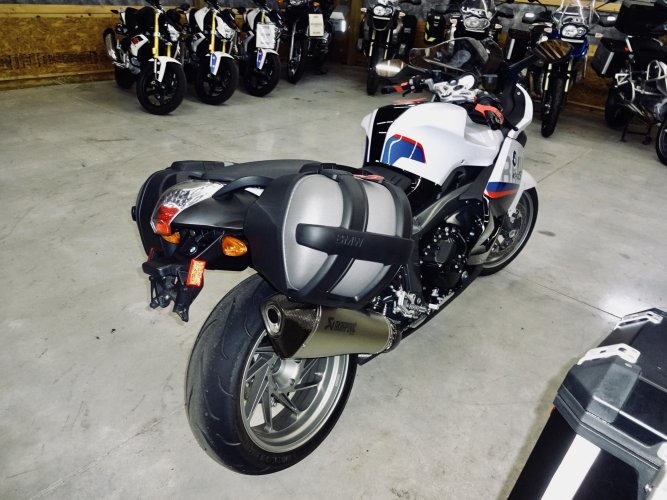I realize forged wheels are stronger than the cast wheels. But I can't find the weight difference between the stock and forged wheels on the K1600 b. Yeah they look real nice but I couldn't dish out the extra $$$ just for looks and I have never broken a wheel so I'm not real worried about the extra strength. I have looked but haven't been able to find the exact weight difference. Anyone out there know the answer. Thanks
Navigation
Install the app
How to install the app on iOS
Follow along with the video below to see how to install our site as a web app on your home screen.
Note: This feature may not be available in some browsers.
More options
-
Welcome, Guest! We hope you enjoy the excellent technical knowledge, event information and discussions that the BMW MOA forum provides. Some forum content will be hidden from you if you remain logged out. If you want to view all content, please click the 'Log in' button above and enter your BMW MOA username and password. If you are not an MOA member, why not take the time to join the club, so you can enjoy posting on the forum, the BMW Owners News magazine, and all of the discounts and benefits the BMW MOA offers?
-
Beginning April 1st, and running through April 30th, there is a new 2024 BMW MOA Election discussion area within The Club section of the forum. Within this forum area is also a sticky post that provides the ground rules for participating in the Election forum area. Also, the candidates statements are provided. Please read before joining the conversation, because the rules are very specific to maintain civility.
The Election forum is here: Election Forum
You are using an out of date browser. It may not display this or other websites correctly.
You should upgrade or use an alternative browser.
You should upgrade or use an alternative browser.
forged wheel weight
- Thread starter jimbem
- Start date
AjaxTheDog
New member
Unsprung weight
Anything you can do to reduce unsprung weight is supposed to improve handling. That is the motive behind mag instead of steel wheels. You might be able to get that ~1/2 lb you want to get rid of by relocating the reflectors on the forks or reducing the weight of the fender attached to the wheel. Unsprung weight is why I am not a fan of those road lights that attach to your front axle or thereabouts, which increases it. Mounting them elsewhere like on the cowling is a better idea if you want to minimize unsprung weight.
No offense to anyone, do what you like and whatever works for you. Don't want to start a firestorm.
Anything you can do to reduce unsprung weight is supposed to improve handling. That is the motive behind mag instead of steel wheels. You might be able to get that ~1/2 lb you want to get rid of by relocating the reflectors on the forks or reducing the weight of the fender attached to the wheel. Unsprung weight is why I am not a fan of those road lights that attach to your front axle or thereabouts, which increases it. Mounting them elsewhere like on the cowling is a better idea if you want to minimize unsprung weight.
No offense to anyone, do what you like and whatever works for you. Don't want to start a firestorm.
pauls1150
MOA #24991, south of Los Angeles
While unsprung weight is certainly part of the equation, don't overlook that it would also mean less rotational mass - less centripetal (or centrifugal?) force. Gyroscopes are more stable when their outer ring is heavy; racers like light wheels because it makes leaning and turning easier.
pglaves
#13338
For the typical (I won't say "average") rider unsprung weight is something to read about but then not worry about ever again. Sure, lots of pounds (kilograms) might matter but within the realm of aluminum vs steel vs titanium vs unobtanium vs carbon fiber (fibre) wheels it matters very little to a street rider.
As an old gearhead and motor techy I am interested in this stuff but it would never dictate what wheels I would use. Tube vs tubeless is far more important to me.
As an old gearhead and motor techy I am interested in this stuff but it would never dictate what wheels I would use. Tube vs tubeless is far more important to me.
Similar threads
- Replies
- 5
- Views
- 724
- Replies
- 2
- Views
- 1K
- Replies
- 1
- Views
- 248


